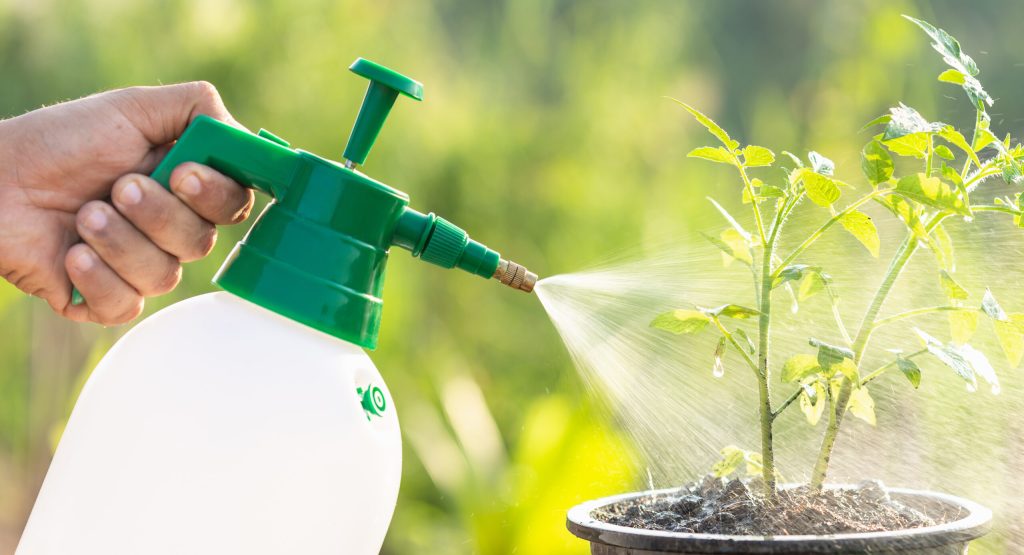There is no evidence that using neem oil in the garden will harm plants. In fact, neem oil is often used as an organic pesticide to control pests and diseases. However, it is possible to put too much neem oil on plants.
- Applying too much neem oil can cause leaf burn or other damage to the plant.
- Neem oil is a natural pesticide that can be used to control a variety of pests on plants
- It is important to read the label carefully and follow the directions when using neem oil, as too much can be harmful to plants
- When applying neem oil, be sure to coat all surfaces of the plant, including the underside of leaves, as this is where many pests reside
- If possible, apply the neem oil in late evening or early morning when bees are not active, as it can be toxic to them if they come into contact with it directly
- Be sure to wash your hands thoroughly after handling neem oil, as it can be irritating to skin and eyes
Neem oil for plants how to use?
Can Neem Oil Damage Plants?
Neem oil is a natural, non-toxic product that can be used as an insecticide for your plants. While it is generally safe to use, it can cause damage to plants if not used correctly. Here are some things to keep in mind when using neem oil on your plants:
– Neem oil must be diluted before use. It should be mixed with water at a ratio of 1 part neem oil to 100 parts water.
– Be sure to spray all plant surfaces, including the undersides of leaves, where insects are likely to hide.
– Reapply the mixture every few days until the problem is resolved. If you use neem oil as directed, it will not damage your plants. However, if you use too much or do not dilute it properly, it could cause leaf burn or other problems.
If you have any concerns, always test the mixture on a small area of the plant first before applying it more broadly.
What Happens If I Spray Too Much Neem Oil?
If you spray neem oil in high concentrations, or if you don’t follow the directions on the label, it can cause skin irritation. In severe cases, it can cause chemical burns. If you get neem oil on your skin, wash it off immediately with soap and water.
How Often Can I Spray Neem Oil on My Plants?
Neem oil can be applied to plants as often as needed to control pests and diseases. For best results, it is recommended to apply the oil every 7 to 14 days.
Should I Rinse Neem Oil off My Plants?
If you’re using neem oil as a pesticide, it’s important to note that it will only be effective if it’s present on the plant surface. For this reason, many gardeners choose to rinse neem oil off their plants after applying it. While rinsing won’t remove all of the oil, it will help to reduce its concentration.
There are a few things to keep in mind if you decide to rinse neem oil off your plants. First, be sure to do so within eight hours of application. After that time, the oil will have penetrated the plant’s surface and won’t be easily removed.
Second, use lukewarm water when rinsing so that you don’t damage the plant leaves. Finally, avoid using soap or detergent as these can strip away the natural oils that protect the plant from pests and disease.

Which Plants Don’t Like Neem Oil?
Neem oil is a popular natural pesticide, but there are some plants that don’t like it. Here are a few examples:
- Azaleas
- Camellias
- Ficus
- Hibiscus
- Roses
Some gardeners report that neem oil can cause leaves to drop from these plants, so it’s best to use it with caution. You may want to test it on a small area of the plant first to see how it reacts.
How to Wash off Neem Oil?
Assuming you are referring to using neem oil as an insecticide: To make a neem oil spray, mix 1 teaspoon of neem oil and 1/2 teaspoon of dish soap with 2 cups of water. Put this mixture into a clean spray bottle and apply it to your plants, being sure to coat the undersides of the leaves.
Neem oil can burn plant leaves if applied directly, so always use a diluted solution. This mixture will keep for up to two weeks in the fridge. If you have plants that are infested with aphids, whiteflies or other insects, you can use neem oil as a direct treatment.
Simply apply the oil to the affected areas with a cotton swab or brush. Be sure to reapply every few days until the problem is resolved.
How to Dilute Neem Oil for Plants?
As anyone who’s ever used neem oil knows, it has a strong and distinctive smell. Some people love the smell, while others find it to be too strong. No matter what your opinion is of the scent, there’s no denying that it can be quite overwhelming when applied directly to plants.
This is why it’s important to know how to dilute neem oil for plants before using it on your precious greenery. The good news is that diluting neem oil is easy to do, and only requires a few simple ingredients that you probably already have in your home. The first thing you need is some kind of carrier oil.
This could be something like olive oil, coconut oil, or jojoba oil. Once you’ve chosen your carrier oil, simply mix it with an equal amount of neem oil. For example, if you’re using 1 cup of carrier oil, mix in 1 cup of neem oil as well.
Once your mixture is complete, simply apply it to your plants as you would any other type of plant spray or pesticide. Make sure to cover all sides of the leaves and stems for best results. If you find that the smell of neem oil is still too strong even after diluting it, try adding a few drops of essential oils like lavender or eucalyptus to help mask the scent.
Conclusion
If you’re wondering if you can put too much neem oil on plants, the answer is yes. Neem oil is a natural insecticide that can be used to control pests on your plants. However, if you use too much neem oil, it can damage your plants.
